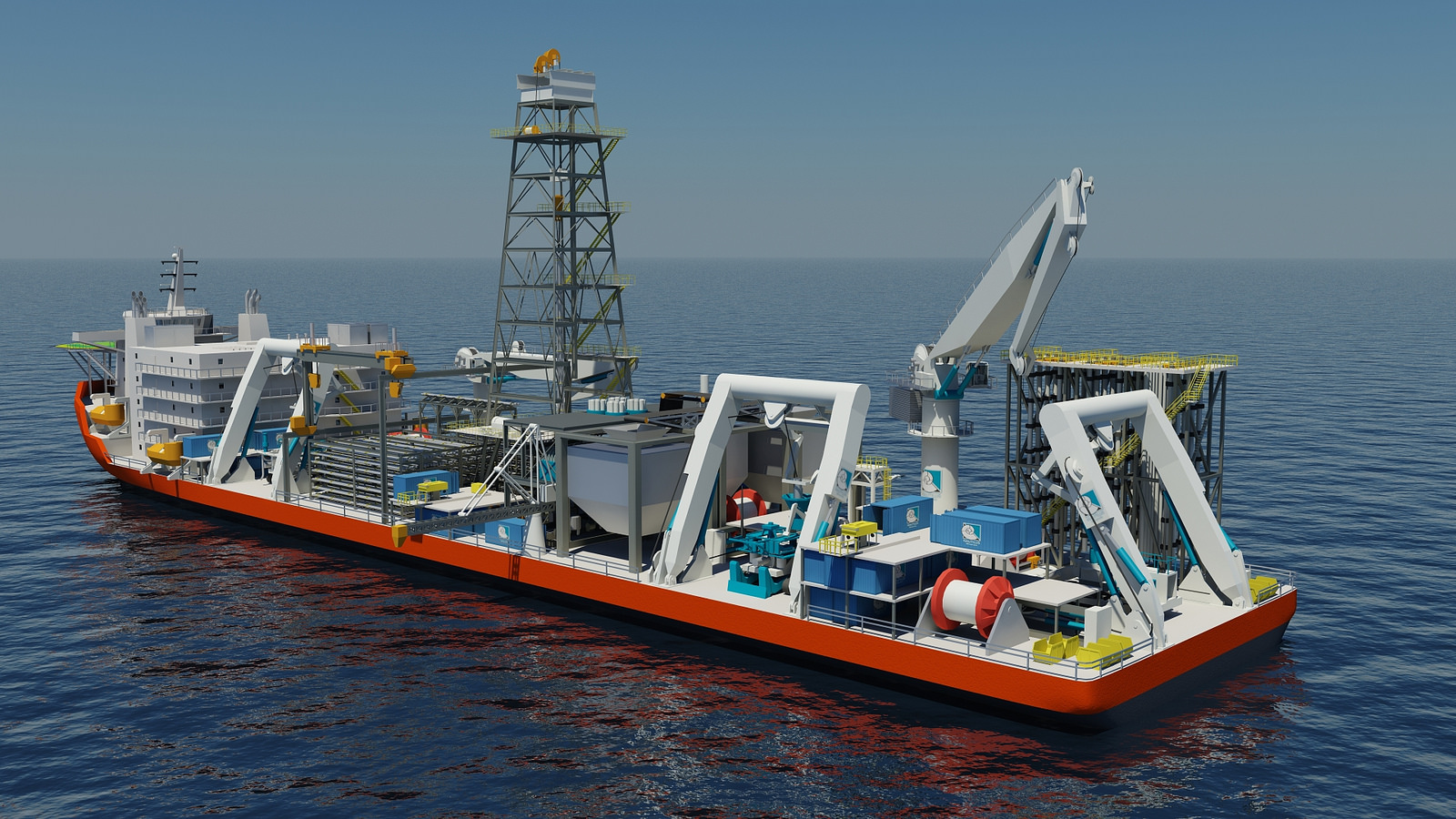The changing dynamics of society, coupled with new technologies, both in terms of digital solutions and industrial capabilities, are opening up a new maritime world. Shipping and deep sea fishing are no longer alone the seas, but the companies that have the expertise and skills to support the shipping and maritime sectors may soon be able to find new growing markets in the opening ocean space. This is the first of three initial examinations of new opportunities emerging in ocean economics.
THE maritime industry is becoming an ocean industry as new entities join the commercial bustle of utilising the seas.
Deep sea and coastal mining, the development of mega-aquaculture trends, along with deep water oil and gas exploration and wind power extraction. There is also the near commercialisation of other renewable energy creation from the oceans as well as bioindustries such as algal biofuels.
New infrastructure is going to be needed as well as deeper thought to spatial planning. This all comes on the back of international drives for the establishment of a bedrock of sustainability that underscores any commercial activity in today’s modern society. New industrial and digital technologies, and higher levels of connectivity are the enablers for this sustainable change; and most of this is beginning to be used in parts of the existing maritime and shipping industry.
Danish Ship Finance recently published its market update for the shipping sector, and the forecast is not good. The provocative report suggests that the severe and lengthy market downturn is no longer cyclical, but structural.
Over the last few years a number of shipping companies, as well as suppliers and technology research firms, have merged, gone bust or severely repositioned themselves. The industry need an opportunity for growth, but the prospects within the more traditional structure look unlikely.
There are macro-economic changes impacting global trade such as the growth of service economies (such as Chine that will led to a shift in goods flows) and global populations. There is the World Bank another bodies’ predictions of global population growth. And then there is the climate.
This is impacting shipping on different levels. Not least is the pressing demand for the decarbonisation of the shipping and maritime sectors, but there is the prediction of rising sea levels due to global average temperature increases in the coming decades that could flood coastal areas, threatening ports, particularly those with reclaimed land.
Professor Larry Hildebrand at the World Maritime University says there are many factors that will impact the maritime environment and is unsure if there is anything we can do about it.
But what is sure is that with the growing population predictions the use of the oceans will increase despite these challenges. There is a growing push, particularly as new technologies have emerged for ocean mining.
This year De Beers, the diamond miners took delivery of a unique ship, a diamond sampler, and have ordered another, high tech diamond mining vessel. Norwegian shipyard. Kleven has expanded its offshore shipbuilding know-how to get both orders.
In Norway a mining consortium, Nordic Mining, NTNU and Statoil, was created five years ago to research how to extract these rare mineral resources; he technology no exists to extract the zinc, gold, silver and zinc. These are minerals needed for smart phones, computers and even wind farms and solar panels.
Professor Ingrid Scholberg is director of NTNU Oceans and specialises in underwater robotics. Deep Sea mining will be important, she says, but the research must be done to ensure the minerals are extracted sustainably and ethically. These deposits are found at the lava vents in the North Atlantic ridge, some of it in Norwegian waters.
But she says, new ships will be needed to do this; new ships to collect the slag from the deposits that lie 3,500 meters under the water and possibly sort and process the slag and minerals ahead of it being sent ashore. The Norwegian deposits are largely at Mohnsryggen, which means any vessels would need to can handle the harsh arctic conditions that far north.

Scientists also say it may be possible to use the vents, which spew the mineral rich water out at about 400 degrees, as thermal energy in the future, another ocean use that will require technology firms and the maritime industry to get involved.
In international waters the extraction of the seabed minerals is controlled by the International Seabed Authority which is responsible for giving out exploration rights. It has given out a number, particularly for areas in the Pacific south of Hawaii known as the Clarion Clipperton zone which lies between two fracture zones bearing those names.
Licenses have already been issued and companies like Keppel in Singapore and the UK engineering firm Lockheed Martin are involved.
Fathom-News.com































